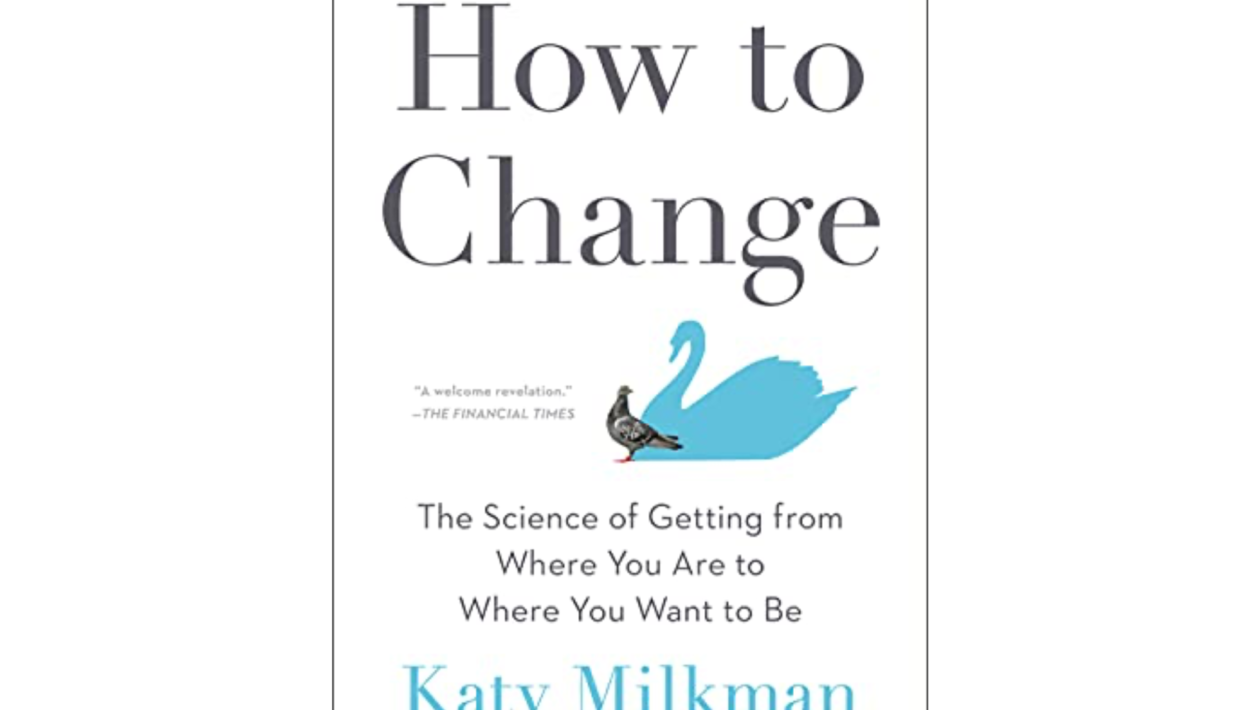By Katy Milkman
Portfolio/Penguin (2021)
Kindle edition, 272 pages
Reviewed by MERVI KALMUS
The title of her latest book, How to Change, summarizes well the focus of Professor Katy Milkman’s academic research. She is a behavioral scientist who is most interested in the scientific reasons of why humans behave the way they do. Having worked with and advised many successful companies, such as Google and Walmart, on the real possibility of positive behavioral change and having conducted a number of novel experiments in this field, she invites the reader into the world of behavioral science and encourages everyone to tackle their inner adversaries who stand in the way of lasting positive change. Using simple and accessible language, she translates the complex human nature and the latest news from the field of psychology into practical steps that anyone committed to better life quality and achievements can take.
One of Milkman’s main theories is that positive change requires a personal approach. In her words, it is not enough to read self-help bestsellers and try to apply the general advice to one’s specific circumstances. Rather, she advocates for a personal take: “to give yourself the best chance at success, it’s critical to size up your opponent and develop a strategy tailored to overcome the particular challenges you face” (loc. 400). To help the reader find the “tailored strategy” she or he needs, Milkman has divided her book into eight chapters, each of which deals with one possible opponent on the journey toward better and healthier choices. These eight opponents are as follows: the timing of change, impulsivity, procrastination, forgetfulness, laziness, the lack of confidence, conformity, and habits. All of these very human traits that we often try to ignore affect our decision-making and behavior; therefore, it is beneficial to understand the rationale behind them and recognize their effect on us on an unconscious level.
Milkman has practical tips readily available in each chapter. Many of them articulate principles that people intrinsically know to be true, but it is still helpful to read them in black and white, supported by data from recent psychological studies. For example, when it comes to timing, “people instinctively gravitate toward moments that feel like fresh starts when they want to make change happen” (loc. 549). Therefore, anything that interrupts our routine, and the steady flow of days, can be turned into an opportunity for change. The second adversary—impulsivity—means in Milkman’s terminology that people are overconfident about the motivation coming from long-term goals; instead, she suggests making “good behaviors more gratifying in the short-term” (loc. 1104). This can be achieved by “bundling” together the tedious tasks (like essay writing) with enjoyable activities (like cake eating) or by adding the elements of a game to a given task, making it less monotonous and more entertaining.
Her steady flow of advice continues in the next chapter where procrastination is analyzed. When someone is constantly battling being late with tasks and deadlines, she suggests “commitment devices” as medicine—they are constraints that we impose on ourselves, which can range from paying money as a penalty when missing a deadline to making a pledge to a friend. All these devices—some of which are admittedly rather odd and rarely used— give a psychological boost to the decision to get things done on time.
When it comes to forgetfulness and laziness, the two most common reasons for flaking out and not following through with one’s intentions, timely and detailed reminders, cue-based plans (“When X happens, I will do Y”), choosing wise default-settings (like setting one’s browser’s homepage to work email and not Facebook), and linking new desirable habits to old ones may prove helpful. In this way, one “can turn laziness into an asset that facilitates change” (loc. 2180).
The next two aspects—namely the lack of confidence, especially in the face of failure, and conformity to social norms—seem to deviate somewhat from the usual flow of the book, concentrating on inner and social insecurity that can also hinder the progress of forming better habits. The advice given in those chapters is also less concrete. But in summary, all these psychological traits either hinder us or support us in the bid to form lasting habits and improve our personal or vocational life quality.
How to Change is useful and highly recommended reading for a Christian minister, graduate student, or any other person whose work schedule and tasks depend mainly on their own ability to motivate themselves and overcome inner obstacles. In a world where many people no longer engage in menial and mechanical tasks but have the freedom of more creative jobs, the topic of self-discipline becomes crucial. Whether it is the deadline of the next academic paper, the schedule of pastoral home visitations, or a wish to go to the gym more often, the discrepancy between the reality of daily choices and the desired outcome and the obstacles lying in between these two are familiar to most people. Yet in many cases, the inner struggle remains vague and unnamed. How to Change gives an opportunity to take an honest inventory of one’s inner life and ask difficult questions about the areas of life that may benefit from long-lasting changes. It also categorizes and names the usually unnamed adversaries, thus making them more concrete and easier to identify and tackle.
The advice given in this book is so vast and varied that at times it can feel slightly overwhelming. Therefore, it does not sound reasonable to try to put into practice everything one has learned. Rather, it may be better to choose one or two areas of life or methods described to create the “tailored strategy” fit for a specific time and person. On the other hand, despite all the advice, How to Change leaves the Christian reader with a feeling that something is still lacking. This book, secular as it is, sees positive change as something that can be achieved solely by human will and effort. This does not fully coincide with the Christian understanding of the inner workings of the Spirit and the process of ripening of the good “fruit” as something that requires a cooperation between the human and the divine. Nevertheless, as a treatise of psychological studies it is a valuable and timely reading from which many people could benefit.
Mervi Kalmus is a pastor and a schoolteacher in her native country of Estonia. She is also a doctoral student at Andrews University, Berrien Springs, Michigan, USA.

